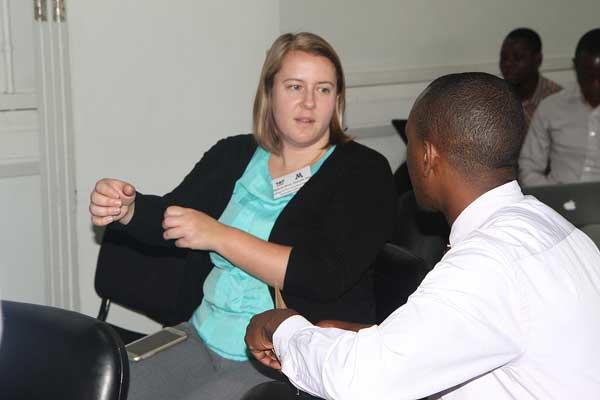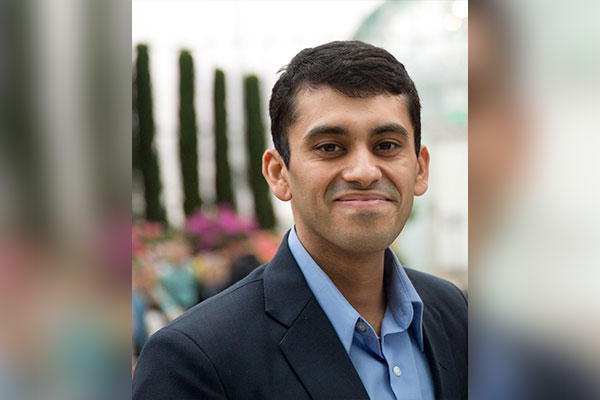Seeing Beyond the Words: An Interview with Derek Jennings
January 18, 2017

MINNEAPOLIS/ST. PAUL — According to Aristotle, “The soul never thinks without a picture.” So perhaps the image-based research Dr. Derek Jennings does could be defined as a way to ‘discover what the soul is thinking’…
Jennings is an assistant professor in the Department of Pharmacy Practice and Pharmaceutical Sciences on the Duluth Campus and the outreach director for Research for Indigenous Community Health (RICH) Center. He has a PhD in curriculum and instruction (with an emphasis in communications and technology), a degree in philosophical and social foundations of education, with a minor in film/photography. He has also been a freelance photographer who has taught photography for 10 years at a summer arts institute.
He has become very skilled in using the qualitative research methodology called PhotoVoice. PhotoVoice allows Jennings to combine his wide areas of knowledge and skill to develop health research projects with American Indian communities.
PhotoVoice enables people to tell their own stories, expressing their thoughts, ideas, culture and values through photographic representations. It works like this: the community or the researcher picks a topic to explore. The participants make photographs that explore and represent the topic and tell their own story through images. The information is deep and rich, containing multiple layers of meaning.
The participants then talk about what they chose to photograph. It’s an important part of the narrative to understand why these images where created, what they mean to the participant. Jennings knows, “Meaning that is attached by the person who took the picture, is the most powerful.” So he listens carefully to their descriptions and analyzes the story they provide.
“I always talk about photographs as being just a file marker of abstract thoughts,” Jennings explains. “If you handed me your family’s photo album, I might not be able to know what’s going on with the pictures. You would have to sit there and tell me what you remember… ‘Oh, that was 2008, my grandmother’s birthday . . . We were celebrating my graduation on this day with my family’ – and you would tell me all these stories. But they really are just symbols that are file markers for your brain to attach meaning to.”
He tells about a group of American Indian women who have become known for running trail races and exercising. At first the group was three to four women who were wanting to get healthier. They started walking. Soon others joined. What began with a just few women walking grew into a group of 20–30, running marathons. And they got healthier. “A couple of them lost around 100 pounds.”
Jennings explains what drew him to this group for a PhotoVoice project.
“I like to find those things that are working, attach research to them to figure out why and how they are working.” He then shares that information back to the community. The run-group is ‘a thing that’s working.’
The women have created a community of support for themselves: from the reservation, from family and from the run-group (friends). How? How were the women using social media to meet up to run? Most importantly, Jennings asked, “How do you make a community within a community, that will be supportive?”
He provided the women with cameras for about a week, to document their experiences and show what it means to them to run and to live healthier lives. “And so they photographed and told stories about their individual lives.”
“A lot of them had compelling stories about past relationships, their families, wanting to be good ancestors for their children.”
He learned that when they run, the women talk about their ancestors. Some who have been adopted out are trying to learn about their culture and rebuild their roots to their ancestors.
“They talk about trauma, they talk about things that have happened and how it has affected their lives. So it’s kind of a therapy situation also.”
Currently Jennings is working on a project called Food Medicine.
“It’s a model about food and behavior, history and connection to culture.” He is drawn to this type of research because, “It’s image-based so there is so much information, not just focusing on one little area.”
Collaborative research is attractive to Jennings because it allows for multiple approaches from multiple perspectives. He prefers to explore issues this way. He works with American Indian communities, learning from collective wisdom. He also enjoys working collaboratively at RICH, as part of a larger team of researchers with differing expertise, “bringing many people around the same table, to solve health problems.”
Dr. Michelle Johnson-Jennings is Jennings’ wife and one of his collaborators at RICH. Both conduct research around tribal health issues, particularly obesity research, and both have said that combining their different approaches enhances the success of their projects.
Dr. Derek Jennings brings deep understanding and expertise of qualitative methods, especially image-based research. With a background in clinical psychology, Dr. Johnson-Jennings applies more quantitative approaches. Together they are able to examine a problem more fully than either approach can offer alone.
“This is the way of the future. I think this is how the academy will be ready to make changes in society – these more collaborative approaches to research.”
(Originally published by the Office for Equity and Diversity. Written by Amelie Hyams.)


